2017 Michigan Basketball Player Comparisons

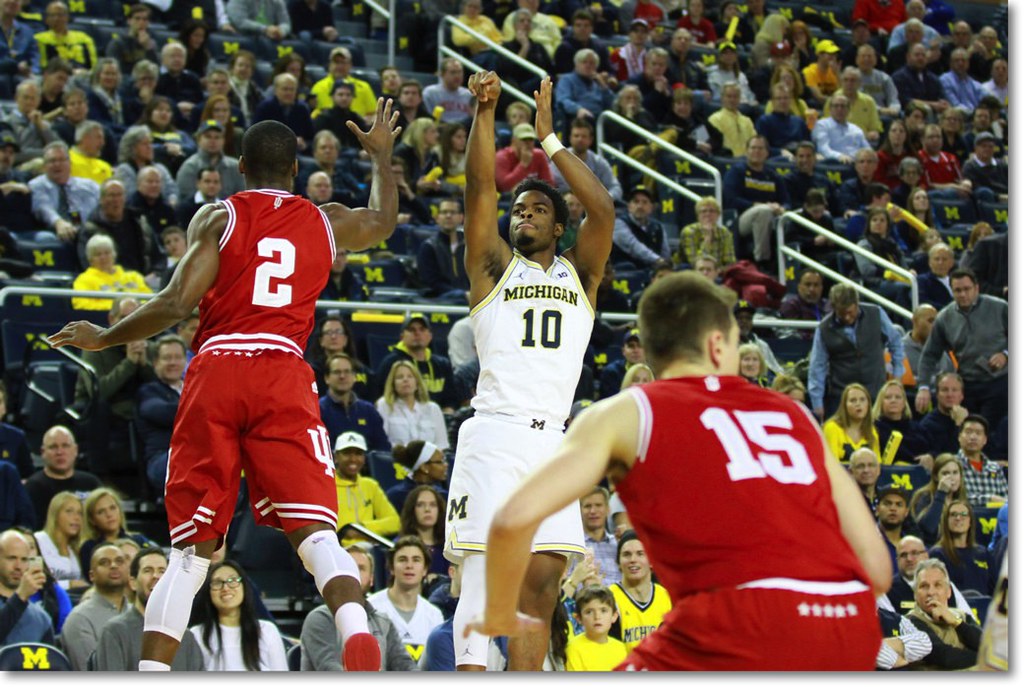
Walton's game resembles that of a former IU star and Wolverine-killer. [Marc-Gregor Campredon]
With 25 games played so far this hoops season, the statistical profiles of teams and players are pretty representative of the quality of those teams and players; by mid-February, the sample size of relevant information is definitely large enough. With that in mind, I took a look at the advanced stat profiles for Michigan’s four players who average double digit points: Derrick Walton, Zak Irvin, Moritz Wagner, and DJ Wilson.
A few years ago, I came up with a way to compare a player’s statistical output to a database of former Big Ten players: by now, there are over 1,000 players that can be compared to a given player’s unique performance in various tempo-free numbers. A little more in-depth background can be found here. Basically the algorithm finds a player’s comparable precedents – over the course of the project (which spans players from 2008-2016, the Beilein Era), the outputs of the system have mostly passed the sanity test and frequently the group of similar players tells us something more about the style of a given player than their statistics would in and of themselves.
Usually these similarity score posts feature plenty of charts and graphs and this one is no different.
Derrick Walton: Close to a Legit Star
X-Axis: Usage Rate. Y-Axis: Offensive Rating. Bubble size: Minutes.
X-Axis: Usage Rate. Y-Axis: Offensive Rating.
[After the JUMP: Walton's comp, plus Wagner, Wilson, and Irvin]
Closest Comparison: Yogi Ferrell
Derrick Walton has been on a great run of form lately, but his season performance may have flown under the radar somewhat: the senior point guard has been incredibly efficient as the leading scorer in a top ten offense nationally. His closest statistical comparison is a sophomore Nik Stauskas – a lethal offensive player, the Big Ten Player of the Year, and a lottery pick. Yogi Ferrell, a standout Indiana point guard, shows up twice in Walton’s top four; John Shurna was more of a stretch-four, and the former Northwestern Wildcat was the best player on his team.
Other excellent players – Caris LeVert, Denzel Valentine, Melo Trimble, and Nigel Hayes – crack the top ten most comparable players to Derrick Walton. Hayes’s sophomore season is especially similar in terms of usage and efficiency; that was the season he played alongside Frank Kaminsky and Sam Dekker on a Final Four team – he’s been considerably less efficient as the go-to guy in Madison.
The other players with roughly equivalent usage and efficiency numbers (but not necessarily the same style) aren’t quite stars (except for Ferrell’s junior numbers, which were slightly worse than his performance as an All-American senior). Walton doesn’t quite dominate the ball as much as typical elite Big Ten players, but his offensive rating is about as good as it gets for his level of usage.
Ferrell’s last two seasons in Bloomington are a solid analogue for Walton’s performance this season. They’re both small floor generals and excellent shooters; Walton isn’t quite as good as Yogi was as a senior, but the comparison is still pretty apt stylistically – Walton is a step behind Stauskas and senior Ferrell, but he’s probably closer than we realized.
Moritz Wagner: Actually Sort of a Wing
X-Axis: Usage Rate. Y-Axis: Offensive Rating. Bubble size: Minutes.
X-Axis: Usage Rate. Y-Axis: Offensive Rating.
Closest Comparison: Andrew White
While Moritz Wagner is obviously a center, the algorithm is blind to positions. Based on the players most similar to Wagner – Andrew White was a combo forward, Victor Oladipo was a swingman (and an infinitely better defender than Moritz), Jake Layman another combo forward, Jae’Sean Tate an undersized traditional four, Robert Carter and Max Bielfeldt 4/5 hybrids that could stretch the floor some – his statistical profile is much more like a wing’s than a center’s.
Part of that is his very good outside shooting (and he takes way more threes than most big men), but Wagner is also more wing-like because of his rebounding, decent steal percentage, and mediocre free throw rate. In many ways, Michigan’s offense resembles a five-out scheme with two stretch-fours in Wagner and Wilson occupying the two frontcourt spots. Wagner can also attack off the dribble from the perimeter and mid-post in ways many centers cannot.
His style is effective. All the way back in 2008, DJ White won the Big Ten Player of the Year award as a center; though his style of play (as bruising back-to-the-basket scorer) was much different than Wagner’s, their efficiency and usage are roughly equivalent – but White played 43% more minutes than Moritz has been able to, a significant gap. Still, Wagner’s numbers are quite impressive for a sophomore, especially since he rarely played last season.
Andrew White (who transferred to Syracuse for a fifth year this season) was an unexpected match – mostly a shooter, helped carry Nebraska as a scorer, played alongside Shavon Shields as a wing – but it’s hard to think of many players who can replicate the je ne sais quoi of Michigan’s German center; it makes sense that the algorithm would find wings to be most like him.
It’s worth noting that the system doesn’t (or more accurately, can’t) take defense into account very well, which is how you can get a Victor Oladipo mentioned in the same breath as a Moritz Wagner.
DJ Wilson: There Was a Wisconsin Version
X-Axis: Usage Rate. Y-Axis: Offensive Rating. Bubble size: Minutes.
Closest Comparison: Keaton Nankivil
DJ Wilson’s statistical profile generated matches much closer to his positional archetype than Wagner’s did: Keaton Nankivil was a very effective stretch big – four and five – for Wisconsin on traditional Bo Ryan teams. As a senior, Nankivil was one of the most efficient players in the country, hitting 54% of his twos, 46% of his threes, and rarely turning the ball over. Additionally, few players can replicate his combination of shot-blocking and shooting.
Wilson is one of them. Despite being a little different from Nankivil in key ways – Wilson is longer, a better athlete, and has two more seasons of eligibility left after this one – he’s a similarly effective stretch big man who benefits from playing in a high-powered offense: like Nankivil did as a senior, Wilson is benefitting from converting quality shot opportunities created by others. DJ is more effective inside the arc (63% on twos) than Nankivil was, and not quite as good of a shooter (39% on threes), though still a quality marksman from deep. As far as comparisons go, this is a pretty favorable one for one of the Big Ten’s breakout players.
Interestingly, Jordan Morgan’s stellar senior season shows up as roughly equivalent to Wilson’s combination of usage and efficiency. Morgan was the anchor of a mediocre defense – and seemingly the only thing propping it up at times – but was an incredibly effective scorer, mostly off the pick-and-roll. Wilson has played more this season that Morgan did on that Elite Eight team, and he’s shown off far more scoring versatility than J-Mo did.
In the end, Jarrod Uthoff might be the best comparison point for DJ Wilson. The former Iowa Hawkeye eventually became a star; he was an athletic stretch big with a quick trigger on his jump shot and the requisite length to be a plus defender – Wilson is more impactful as a sophomore than Uthoff was at that stage, but if he develops into the type of player that Uthoff became as a senior, Michigan will have a star.
Zak Irvin: Slightly Less Encouraging Names
X-Axis: Usage Rate. Y-Axis: Offensive Rating. Bubble size: Minutes.
X-Axis: Usage Rate. Y-Axis: Offensive Rating.
Closest Comparison: William Buford
Michigan’s enigmatic senior has been playing very poorly lately; with just 13 points (on 33 shot equivalents!) in the last four games, he’s in about as bad of a stretch as he’s had in his career. It’s unlikely to continue much longer – even a modest regression to the mean will mark significant improvement.
As it is, we can pretty much categorize Zak Irvin as a known quantity at this point: with previous seasons ranking highly on his list of comparable statistical profiles, it seems as if he hasn’t changed much over that time. In fact, his junior season is closer to his senior performance than any other player-season is to any of Walton / Wagner / Wilson’s profile. Irvin is Irvin.
William Buford was a key role player on some great Ohio State teams (and hit the shot that won Michigan a share of the Big Ten title back in 2012), but he was frustrating as a senior and drew plenty of complaints from the Buckeye faithful. Irvin has a little bit of a different role than Buford had – at least until Derrick Walton’s recent emergence – but the two swingmen are equivalent in a lot of ways.
Buford was marginally more efficient, Irvin is a better distributor; Buford had a better outside shot, Irvin is more active on the defensive glass. As far as comparisons go, it isn’t that bad, but Buford’s perceived underachievement is sadly familiar. With some time still remaining in his college career, hopefully Irvin can turn things around.
February 15th, 2017 at 1:13 PM ^
Are you going to do one for MAAR?
February 15th, 2017 at 1:21 PM ^
MAAR:
- Sophomore MAAR
- Freshman DJ Richardson (Illinois)
- Senior Trent Meacham (Illinois)
- Senior Rasheed Suliamon (Maryland)
- Senior Rob Wilson (Wisconsin)
- Junior Trent Meacham (Illinois)
- Junior Jason Bohannon (Wisconsin)
- Junior Chris Allen (Michigan State)
February 15th, 2017 at 1:48 PM ^
Last year, he was fearless around the rim. This year, he seems allergic to driving and looks to settle for threes more often than not.
February 15th, 2017 at 2:03 PM ^
February 15th, 2017 at 2:46 PM ^
At all. Just noting that he seems to be more focused on that perimeter shot as opposed to being the fearless guy that attacks the rim at all costs.
February 15th, 2017 at 6:02 PM ^
With Walton running the offense, and Irvin being the secondary creator, Beilein's offense requires MAAR to often be in a corner for spacing. Fortunately, he has been making his 3s in conference play.
Much of MAAR's penetration past occurred when Walton and/or Levert were injured and he initiated the offense. And MAAR simply hasn't been successfully finishing at the rim this season for some reason---be it other teams adjusting to his strong right-handedness, realizing he rarely distributes off of a penetration, lack of confidence, or something else.
That said, MAAR has played very well of late---particularly on the defensive end.
February 15th, 2017 at 3:08 PM ^
Thank you.
February 15th, 2017 at 1:22 PM ^
Irvin's similarity to himself in different seasons is quite striking. A development wall.
February 15th, 2017 at 2:01 PM ^
February 15th, 2017 at 2:17 PM ^
That's an interesting theory, given how devastating and hard to treat back injuries can be. Perhaps, even if he recovered, he became tentative?
February 15th, 2017 at 3:10 PM ^
Irvin's performace peaked at the end of his sophmore year when Caris and Derek were both out and Spike was the point guard.
The following summer he hurt his back and hasn't been the same since.
February 15th, 2017 at 1:47 PM ^
I watched some of the Michigan v Texas, Michigan v Tenn highlights back in 2014 NCAA Tourney. Typically, a player's form comes into college wonky or needs work and leaves looking a ton better.
Irvin's done the exact opposite. His form looked pretty solid despite a little bit of wonkyness. Now, it's just regressed to something that doesn't even look natural. He's always falling in one direction, his body never squares up to the rim, and he brings the ball so far backwards towards his body before release.
That thing needs to be scrapped, but sadly it's too late for that.
February 15th, 2017 at 3:33 PM ^
catch. Just watched quite a bit of the first half of the Tenn Sweet 16 game. Irvin was pure. A little "wonky" (your word) on the catch getting into his shot but his release is picture perfect.
It also does make you realize how awkward his shot looks today. Kind of makes you feel for the kid. I remember that there was talk after his freshman year and strong play against Oregon and Syracuse in 2014 that he might leave for the NBA after his second season.
You wonder how much that plays into his current slump. Having legitimate NBA aspirations that just don't pan out for a variety of reasons has to be deeply frustrating on a number of levels.
February 15th, 2017 at 2:40 PM ^
February 16th, 2017 at 1:15 PM ^
This content - this post has 17 replies prior to this one.
Imagine a player comparison of this type for football - Hell, even if it was for an OL. It'd break the site.
Or the post above this, about chances to make the tourney - again 502.
I don't know that anything short of a deep tourney run is gonna get people back emotionally involved with the Beilein program. Too "lose to osu, beat msu by 30" for most people's emotional well-being... I like to have a reasonable expectation what performance I'm gonna see, based on past performance.
February 15th, 2017 at 6:08 PM ^
who is the B1G player at 35% usage?
February 16th, 2017 at 10:11 AM ^
my wild guess is D'Angelo Russell
February 16th, 2017 at 12:56 PM ^
February 16th, 2017 at 2:09 PM ^
February 15th, 2017 at 8:17 PM ^
lulz at a Matt Gatens sighting. Wow.
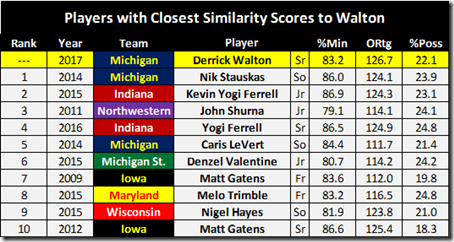
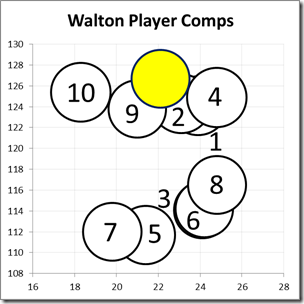
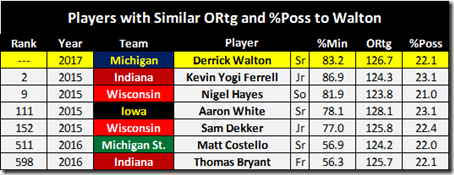


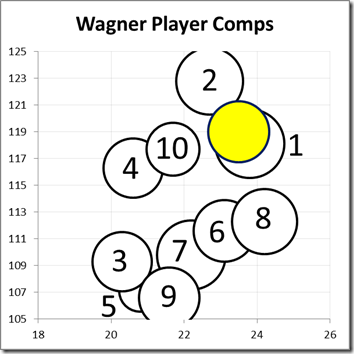


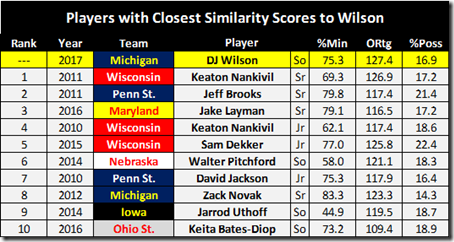


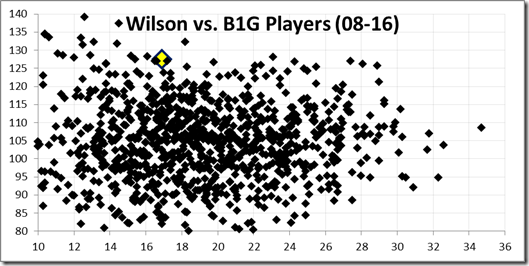

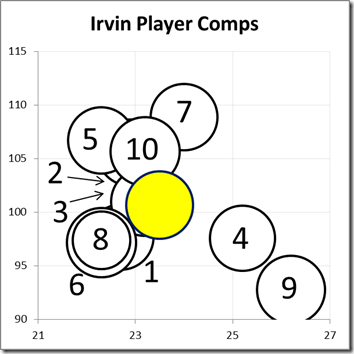
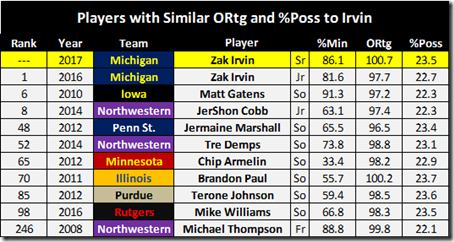
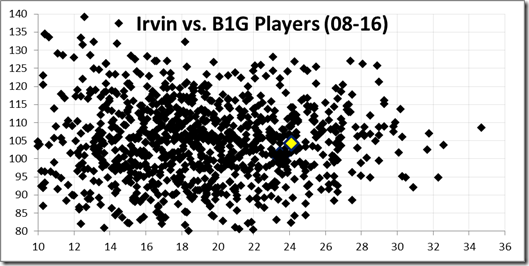
Comments